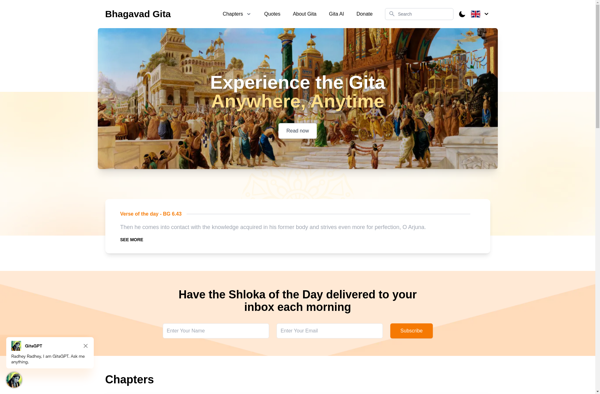Bhagavad Gita

Bhagavad Gita: Ancient Hindu Scripture
The Bhagavad Gita is an ancient Hindu scripture that is part of the epic Mahabharata. It contains a conversation between the Pandava prince Arjuna and his guide Lord Krishna on the battlefield. It deals with concepts like dharma, moksha, karma yoga, and bhakti yoga.
What is Bhagavad Gita?
The Bhagavad Gita is an influential Hindu scripture that is revered as one of the greatest religious classics of Hinduism. Believed to have been composed between the 5th and 2nd centuries BCE, it is part of the Hindu epic Mahabharata, located in the Bhisma Parva chapters.
The Bhagavad Gita consists of a dialogue between the Pandava warrior prince Arjuna and his guide and charioteer Lord Krishna. At the start of the dialogue, Arjuna is filled with moral dilemma and despair about the violence and death the war will cause in the battlefield of Kurukshetra. Lord Krishna explains to Arjuna his duties as a warrior and prince, explaining Hindu doctrines like dharma and karma yoga, as well as the path to moksha (liberation) through devotion to God and detachment from the material world.
The influence of the Bhagavad Gita has been profound, shaping the development of Hindu thought and philosophy over millennia. Key concepts like dharma, moksha, atman, yoga, and karma find their seminal explication in the text. To this day, the Bhagavad Gita remains one of the most influential Hindu scriptures and classics of Indian philosophy and literature.
Bhagavad Gita Features
Features
- Searchable and navigable text of the Bhagavad Gita
- Audio recitations of the text
- Commentaries and explanations from various scholars and teachers
- Ability to bookmark favorite verses or chapters
- Social sharing and discussion features
- Offline access to the text and audio
Pricing
- Free
- Freemium
- One-time Purchase
Pros
Cons
Official Links
Reviews & Ratings
Login to ReviewThe Best Bhagavad Gita Alternatives
Top Education & Reference and Religious Texts and other similar apps like Bhagavad Gita
Here are some alternatives to Bhagavad Gita:
Suggest an alternative ❐Pocket Vedas

Gitabase

Bhaktivedanta VedaBase
